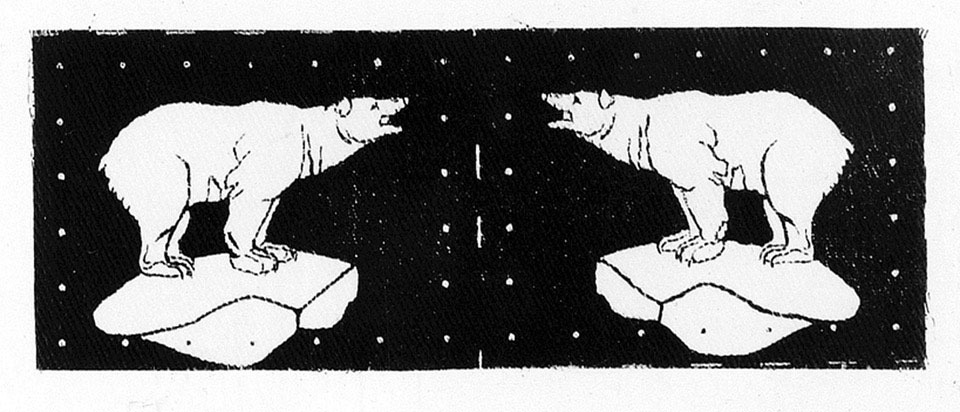
Online Collection
Formation badges, 49th (West Riding) Infantry Division, 1943 (c)
A pair of printed cotton formation badges joined together, with a white polar bear standing on an iceberg with its head raised in a roar, upon a black rectangular ground.
The West Riding Division was formed in 1908 as part of the Territorial Force. Redesignated the 49th (West Riding) Division in 1915, the unit served on the Western Front throughout World War One (1914-1918). Disbanded after the War the division was reconstituted in 1920, as part of the new Territorial Army.
With the outbreak of World War Two (1939-1945) two brigades from the division took part in the ill-fated campaign in Norway. With only two infantry brigades, the 49th were subsequently despatched to Iceland where it remained until 1942. It was this deployment that led to the adoption of the polar bear as the unit insignia. The lowered head of the bear was deemed too passive and it was raised to its current roaring position in 1943. The 49th played a significant role in the campaign in Normandy in 1944 and subsequent operations in the Netherlands.
The division was disbanded in 1946 but reformed as the 49th (West Riding) Armoured Division in 1947, as part of the Territorial Army. In 1956 the formation reverted to an infantry division, becoming the 49th (West Riding and North Midland) Division in 1956. Disbanded in 1967, the unit was reformed as a brigade in 1982 and became the 49 (East Midlands) Brigade in 1992. It merged with 54 (East Anglia) Brigade in 1995, forming the 49 (East) Brigade. In 2015 the Army 2020 reorganisation led to the merger of 49 (East) Brigade with 7th Armoured Brigade, to become 7th Infantry Brigade.
NAM Accession Number
NAM. 1984-12-20-34
Copyright/Ownership
National Army Museum Copyright
Location
National Army Museum, Study Collection
Object URL
https://collection.nam.ac.uk/detail.php?acc=1984-12-20-34


